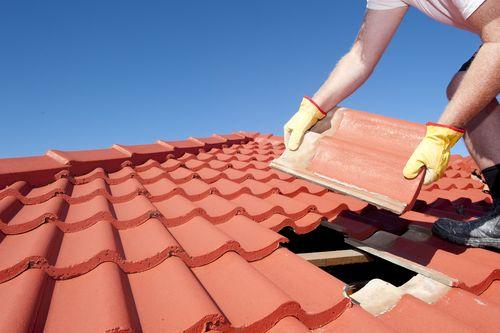If you’re considering a roof renovation, one option to explore is replacing your tile roof with shingles. This transformation can bring a fresh look to your home while offering practical benefits. In this article, we will delve into the process of replacing a tile roof with shingles, discussing the advantages, considerations, and steps involved in this home improvement project.

Understanding the Need for Roof Replacement
Over time, tile roofs may exhibit signs of wear and tear, such as cracked or broken tiles, leaks, or structural issues. In such cases, replacing the entire roof becomes a necessary and practical solution. By opting for shingles, homeowners can achieve a new aesthetic while addressing the underlying issues.
Advantages of Replacing Tile Roof with Shingles
Replacing your tile roof with shingles offers several advantages:
- Cost-Effective: Shingles are generally more affordable than tile roofs. Replacing with shingles can be a cost-effective option, especially for homeowners on a budget.
- Versatile Design Options: Shingles come in a wide range of colors, styles, and textures, allowing you to choose a design that complements your home’s architecture and personal taste.
- Lightweight and Easy Installation: Shingles are lighter than tiles, which simplifies the installation process. This can save time and labor costs during the replacement project.
- Enhanced Durability: Shingles are known for their durability and resistance to various weather conditions, including wind, rain, and UV rays. They can provide long-lasting protection for your home.
Considerations Before Replacing Your Tile Roof
Before proceeding with the replacement, it’s essential to consider a few factors:
- Local Building Codes: Check with local authorities to ensure that replacing a tile roof with shingles complies with building codes and regulations in your area.
- Structural Considerations: Shingles are lighter than tiles, but it’s crucial to assess the structural capacity of your roof and determine if any reinforcements are needed to support the new roofing material.
- Energy Efficiency: Evaluate the energy efficiency of shingles and their impact on your home’s insulation and cooling costs. Consider options that offer high thermal efficiency and energy-saving benefits.
Steps Involved in Replacing Tile Roof with Shingles
Here are the general steps involved in the replacement process:
- Inspection and Preparation: Assess the condition of the existing tile roof, identify any necessary repairs, and prepare the roof for replacement.
- Removal of Tile Roof: Carefully remove the tiles, ensuring proper disposal and minimizing any potential damage to the underlying structure.
- Structural Evaluation and Repair: Inspect the roof’s structure and make any necessary repairs or reinforcements to ensure it can support the weight of the new shingles.
- Installation of Shingles: Install the new shingles according to the manufacturer’s instructions, ensuring proper alignment, fastening, and sealing.
- Finishing Touches: Complete the installation with necessary finishing touches, such as ridge caps, flashings, and gutter systems.
Conclusion:
Replacing a tile roof with shingles offers a practical solution for homeowners seeking to refresh their appearance and address issues with their existing roofs. With cost-effective options, versatile designs, and enhanced durability, shingles can provide a long-lasting and aesthetically pleasing roofing solution. Before undertaking the project, consider local regulations, structural considerations, and energy efficiency aspects. By following the necessary steps, you can successfully transform your roof and enhance the overall look and value of your home.



Leave a Reply